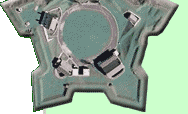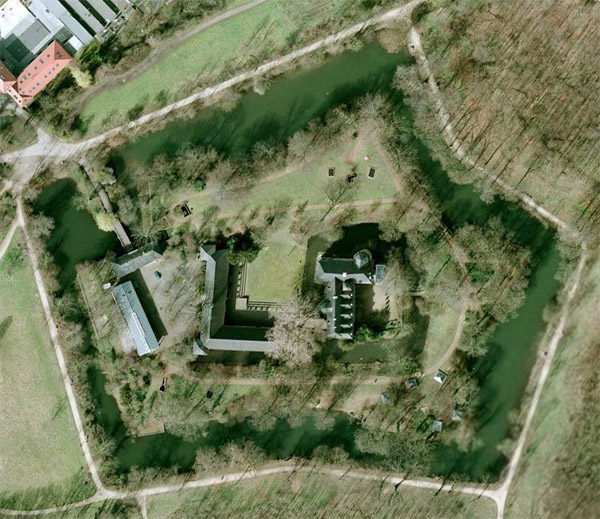
 |
 |
Schloss Rheydt Moenchengladbach, Germany |
 |
 |
 |
 |
|||
 |
|||||
 |
Allow me to begin by saying that Moenchengladbach, the town in which Schloss Rheydt resides, is a scary word if you don't speak German. The town was first called Gladbach, which isn't nearly as scary, named after a brook next to which an abbey was built in 974AD. The abbey expanded over the years, and Gladbach received its first town charter around 1365. The first Schloss Rheydt was built around 1060, and was likely little more than a wooden tower. Over the next 500 years it was expanded to become a fortified square enclosure in which the governing persons of the Duchy of Juelich-Cleves-Berg resided quite snugly, until 1543. Duke Wilhelm V (1516-1592), who oversaw Moenchengladbach and a few other duchies, (perhaps unwisely) sided with the French against Holy Roman Emperor Charles V (1500-1558) in their ongoing conflict over...various European fighty-things. In 1543 Charles' Imperial troops invaded Moenchengladbach, laughed at the medieval Schloss Rheydt, and swiftly overcame it with artillery. Stinging from this defeat yet still somehow in charge of the region, Wilhelm set about reestablishing his Dukedom by constructing state-of-the-art fortifications as strongpoints in his three biggest cities. Italian architecht Alessandro Pasqualini (1493-1559) was hired to work his pointy magic on Schloss Rheydt, which stood on the frontier near the potentially invadery Spanish Netherlands. The cities of Duesseldorf and Orsoy received similar fortification treatement, but lots of squinting at Google Maps has failed to produce anything starfortish to be lovingly drooled over today. |
 |
|||
 |
|
 |
|||
 |
that was Europe had waned, and Schloss Rheydt likely started falling into disrepair. Interestingly and somewhat weirdly, unlike the contemporary fortifications that were built at Duesseldorf and Orsoy, Schloss Rheydt was built to only really effectively defend against infantry attack, as is pointed out in its excellent and in-depth writeup at Fortified Places. What seems weird about this to me is that the whole reason there was a newly pointy Schloss Rheydt was because the original fortification had been done in by artillery. Whatever, Wilhelm must have known what he was doing, since nobody ever attacked the fort. Because actually attacking Schloss Rheydt was obviously completely unnecessary if a force wanted to take over Moenchengladbach! On October 4 1794, Revolutionary French troops marched into the city unresisted and told the monks in the ancient abbey to get lost, as their existence conflicted with French religious laws. The abbey's huge, famous library was destroyed: Way to go, France. Schloss Rheydt changed hands numerous times over the next century, with its owners all coming to the eventual conclusion that it's frickin' expensive to keep a palace in a starfort in good repair. The city of Rheydt bought the schloss from its last private owner in 1917, and has since restored and opened much of it as a museum, which was named European Museum of the Year by the European Museum Forum in 1978. A medieval festival is held there on an annual basis. |
 |
|||
 |
|||||
|
|
|||||||
Info Source 1
Info Source 2
Info Source 3
Info Source 4 Info Source 5 Info Source 6 Info Source 7 Info Source 8 Info Source 9 Thanks to Google Maps and Fortified Places for the images! ©2011 starforts.com |
 |